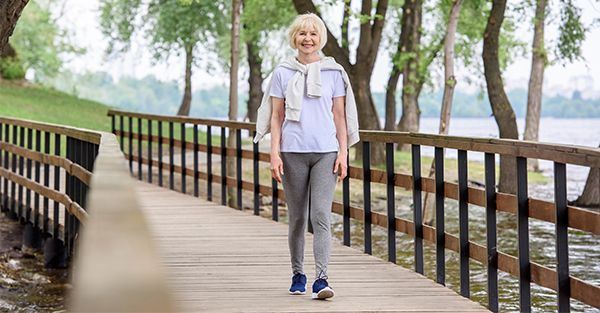
Walking May Be Your Best Exercise
By Jessica Ford, PT, DPT, Neurologic Certified Specialist (NCS) | Therapydia Cherry Creek
Walking is a great form of exercise that is low-impact, helpful for maintaining your independence, and an important function as you age. Walking also requires no extra equipment or gym membership and can be convenient as often times you can just walk out your door and go!
By making walking a regular form of exercise, you will strengthen your cardiovascular system, maintain your good bone health, and reinforce your balance to reduce falls risk. In this blog, we will review considerations of how to start a program, safety, ways to individualize your program, and how to progress your program.
Safety First!
Please contact your Physical Therapist to assist you with starting a walking program if you have any of the following:
- History of Cardiovascular/heart conditions
- History of falls
- Balance issues or unsteadiness
- Fatigue
- Recent change in function
- Lower fitness level
Your Physical Therapist will provide you with specific recommendations on how to safely start and perform a walking program as well as how to succeed!
How to Start a Walking Program
The best way to start a new behavior such as a walking program is by trying to make it a habit in your every day schedule. Consistency will be key to your success! Many people find it helpful by physically scheduling it into their calendar for a daily reminder. Another helpful way to make something a habit is by making it fun! We will go over different ways to individualize your program in next section.
Changing a behavior is not always easy or fast so be patient with yourself. Research describes 5 stages of change from pre-contemplation -> action -> maintenance. This process can sometimes take months so don’t expect change to happen overnight. With my patients, I find if they stick with consistently for a few weeks, they start becoming “addicted” to getting in their daily walk!
BUT HOW DO I START? First, try to think how long or far you could walk where you would feel like it was exercise. This may mean only a few blocks or >1hr depending on your fitness/health level. If this is a new activity or you feel like your fitness level is lower, I recommend starting your program 3x per week. That way you can monitor how you feel during and after your walks and can change your program as needed. If your fitness level is higher or walking feels unlimited, then you can start your program every day.
Ways to Individualize YOUR Program
There are many ways to individualize a walking program that is specific for you and here are some examples. Remember try to make it realistic and fun to help you stay consistent!
- Use treadmill -> great way to continue your program during bad weather, useful if you experience fatigue (as you can stop anytime), and can be used to challenge inclines or speed
- Listen to music -> try to choose upbeat music as you will naturally walk faster to faster music (recommend >170 bpm)
- Walk with a partner -> this is a great way to add accountability to your program and can keep you more consistent. Walking with someone may also be important if you need them for assistance or safety. Recommend walking with a friend, caregiver, or maybe dog
- Change of scenery -> walking on sidewalks or next to busy roads may not be enjoyable to you. Try walking at Sloan’s Lake or Washington Park to get a change of scenery and get motivated by others that also may be walking
- Does speed matter? -> walking speed has long been an indicator of functional ability and balance confidence. I recommend my patients try to walk “a little out of their comfort zone”
- Maybe break up your program into smaller intervals throughout the day. Studies have shown there is little difference between exercising x60min per day versus 6x10min per day
- Usually I recommend challenging continuous walking, but you may need breaks. Try to think of places or routes that may have benches or maybe you go to the mall. If your fitness level is lower, I sometimes recommend a rolling walker as it has a built-in seat
- If you have a challenging time in the heat or experience fatigue, try to walk earlier in AM or later afternoon when it is cooler
How to Progress
In therapy as a “rule of thumb”, I recommend and follow the <10% progression per week rule. This means either progressing time, distance, difficulty of route, or speed by <10% each week so that your body can adapt and avoid injury. Below are some examples of how to progress within the rule over month time period.
Change Time
Week 1 – walk x20 minutes
Week 2 – walk x22 minutes
Week 3 – walk x24.2 minutes
Week 4 – walk x26.6 minutes
Change Speed
Week 1 – takes x30min to walk same x1 mile route
Week 2 – takes x27min to walk same x1 mile route
Week 3 – takes x24.3min to walk same x1 mile route
Week 4 – takes x21.6min to walk same x1 mile route
Change Difficulty of Route
Week 1 – walk route with x1 incline/hill
Week 2 – walk route with x2 incline/hill (can do same hill twice)
Week 3 – walk route with x3 incline/hill (can do same hill 3x)
Week 4 – walk route with x4 incline/hill (can do same hill 4x)